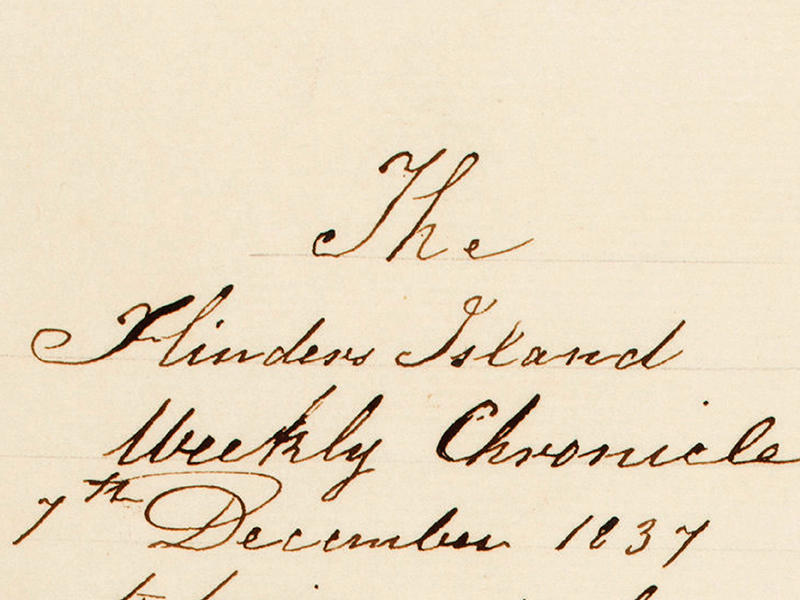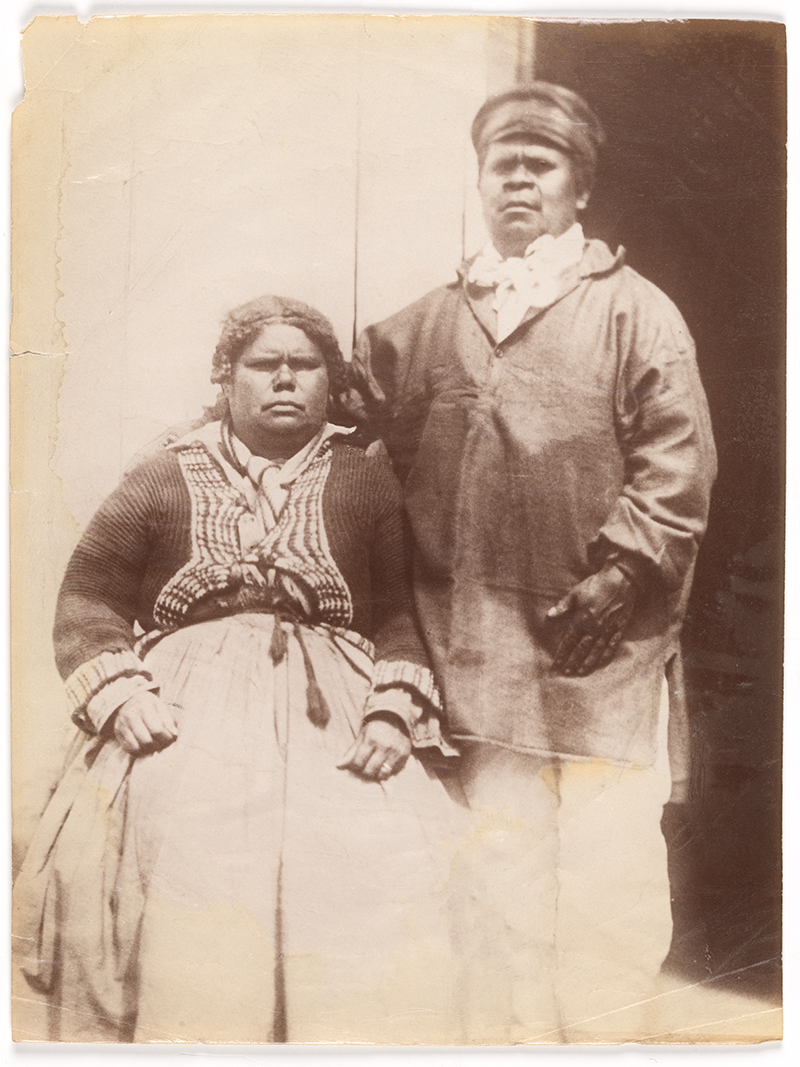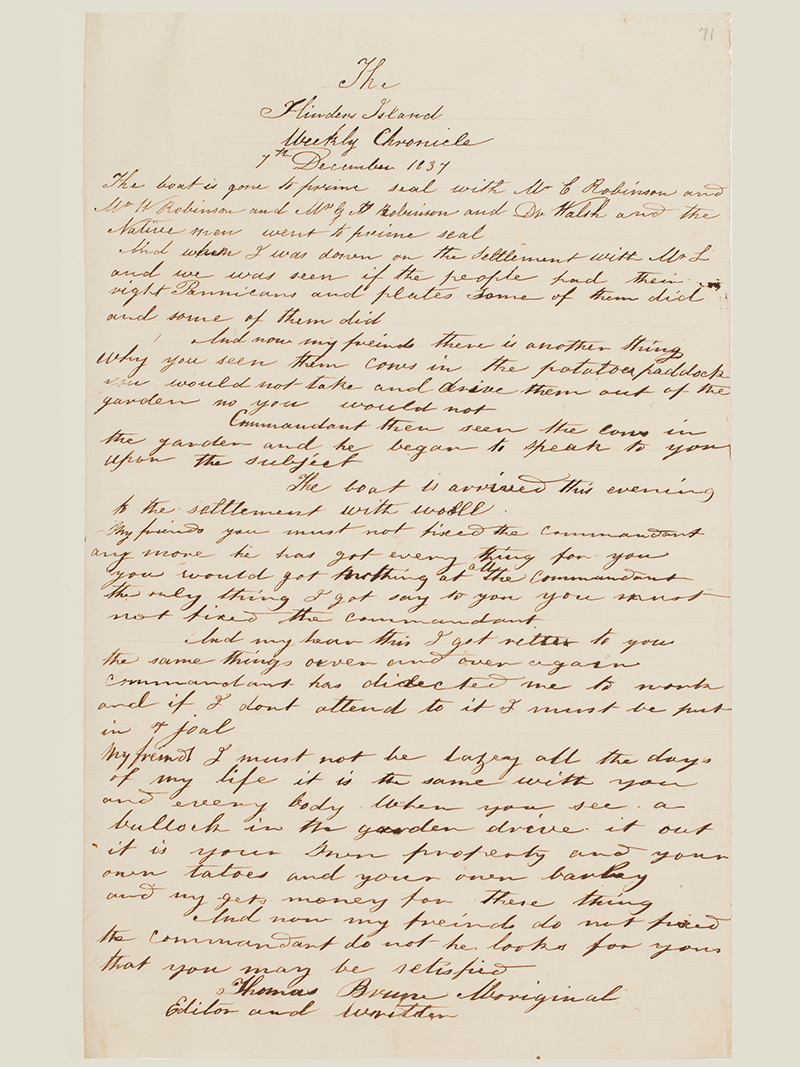
The earliest known writings by Tasmanian Aboriginal people were published in a hand-written journal called The Flinders Island Chronicle. Authored by Thomas Brune and Walter George Arthur, the journal spanned at least forty-two editions and drafts. It was produced between September 1836 and December 1837 at Wybalenna, a place of internment for the survivors of the Black War of Van Diemen’s Land.
The Chronicle was closely edited by the Commandant George Augustus Robinson. Although it emphasised the intent of the authorities to Christianise and assimilate Aboriginal people, the journal provides a unique Aboriginal perspective on events during this period of exile.
Little is known about Thomas Brune. The colonial name he was given suggests he was from ancestral country associated with Bruny Island. He is known to have spent time at the Orphan’s School in Hobart. While still a teenager at Wybalenna, Thomas was a clerk in the offices of the Commandant and Catechist, and chief writer of the Chronicle.
Walter George Arthur, who used the pen name Walter Juba Martin, is recorded as co-writer of the journal from October 1837. He was the son of Rolepa, a senior man from the Country around Ben Lomond. Separated from his family during the war, he was living on the streets of Launceston when Robinson removed him to Wybalenna.
Walter and Thomas each produced editions of the Chronicle. Walter characteristically began his work with ‘Now my Dear friends…’. The two writers appear to have been respectful rivals. Their journal is the earliest newspaper written by Aboriginal or Torres Strait Islander people anywhere in Australia. Walter was also involved in writing an 1846 petition to Queen Victoria – reminding her of a treaty his people had agreed to, and ‘had not lost from our minds since…’.
– Dr. Greg Lehman




